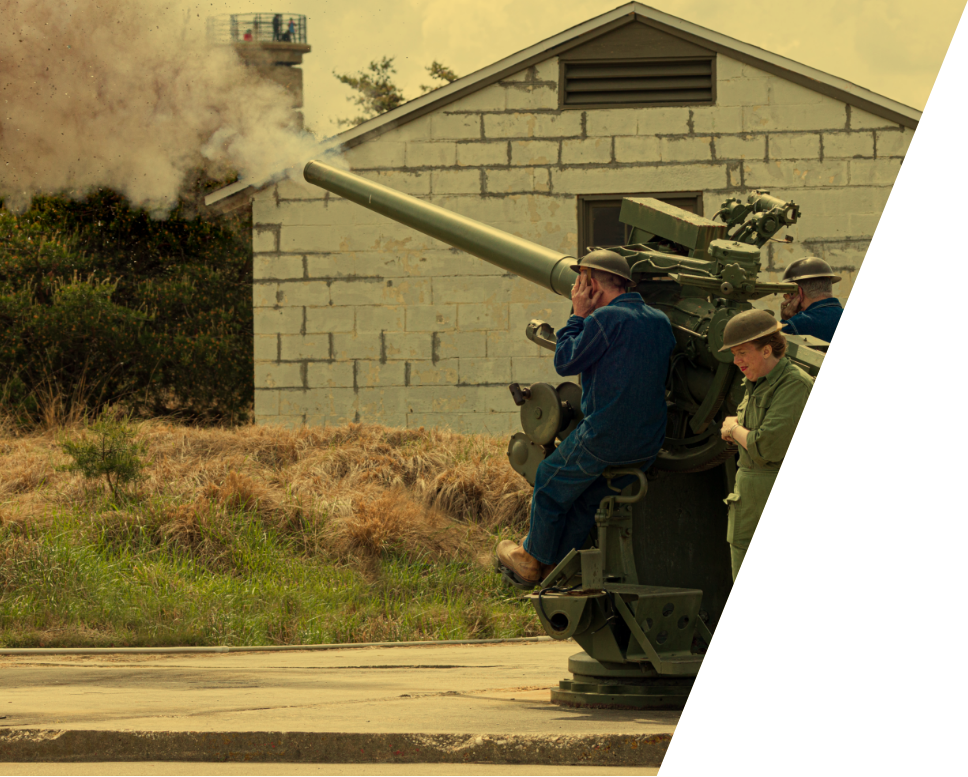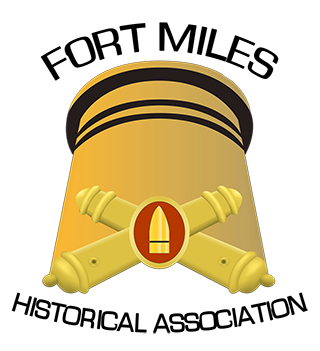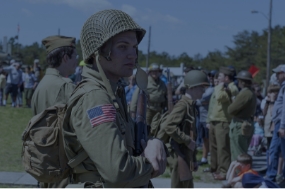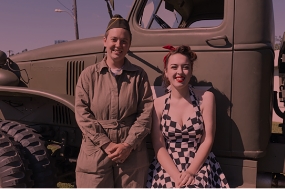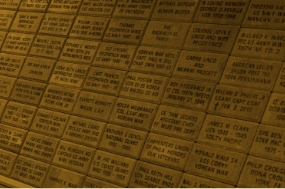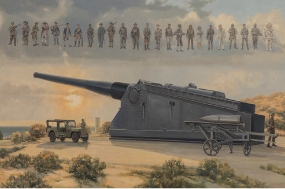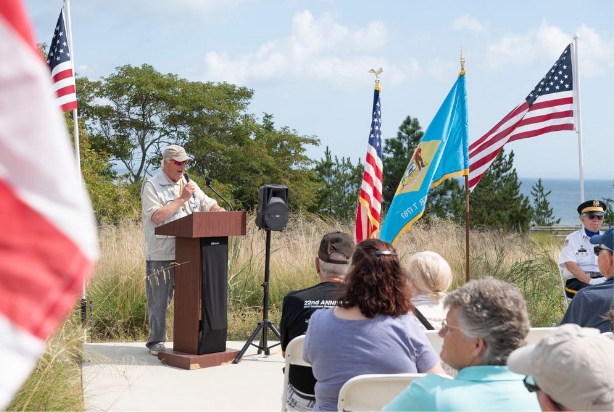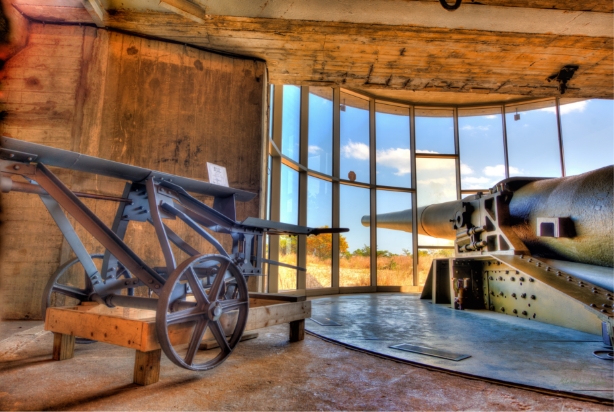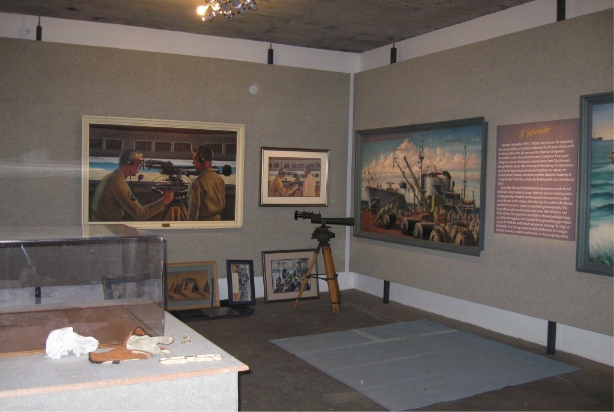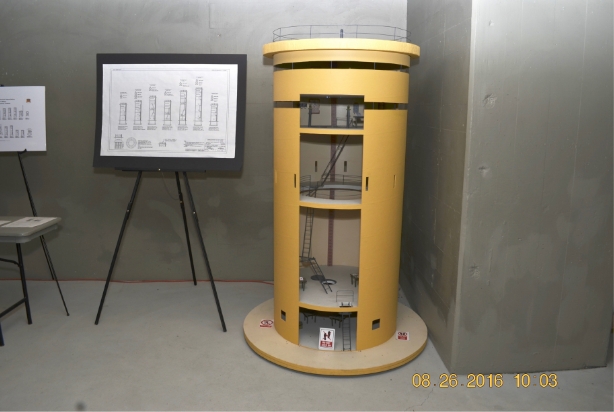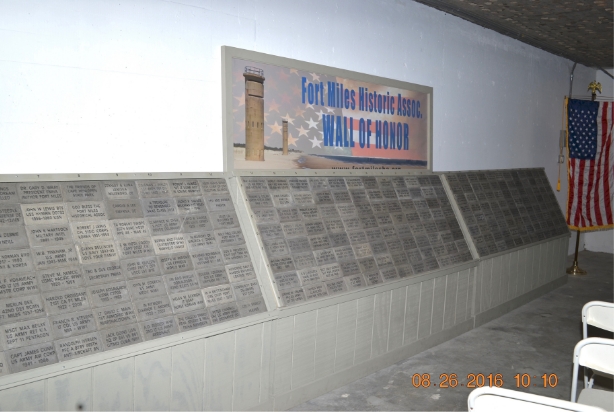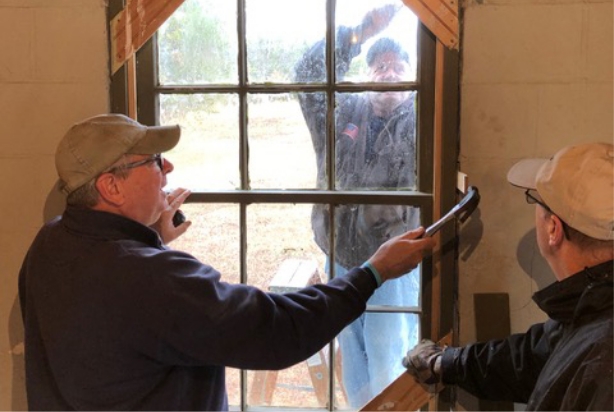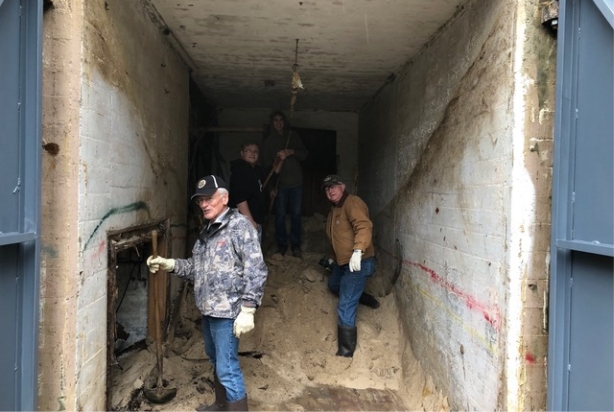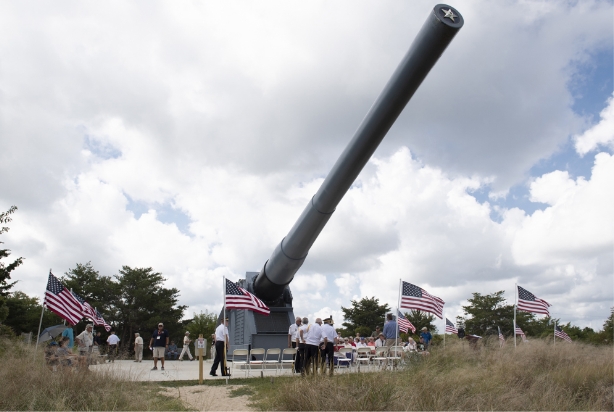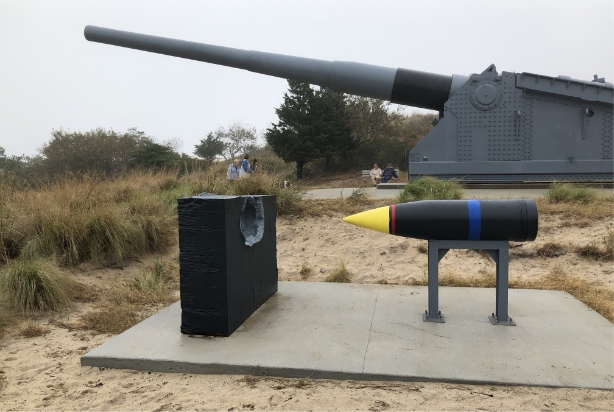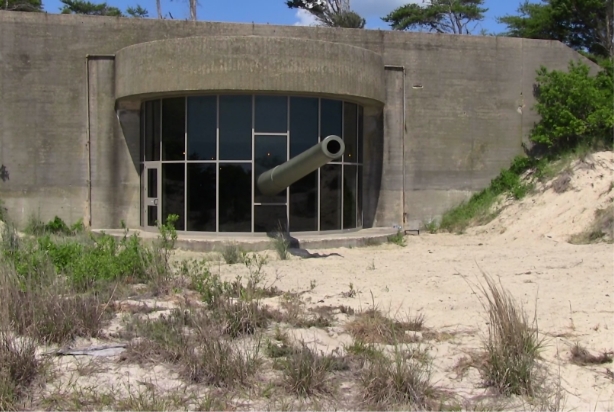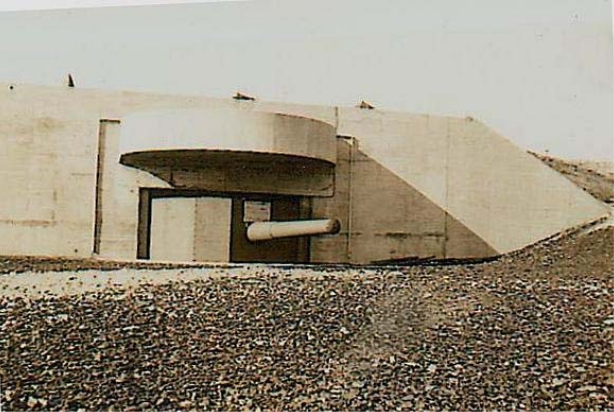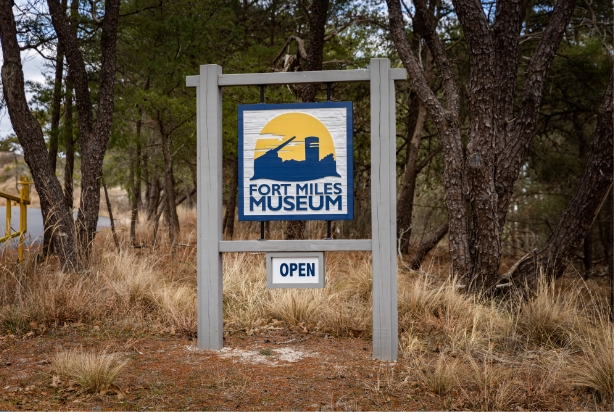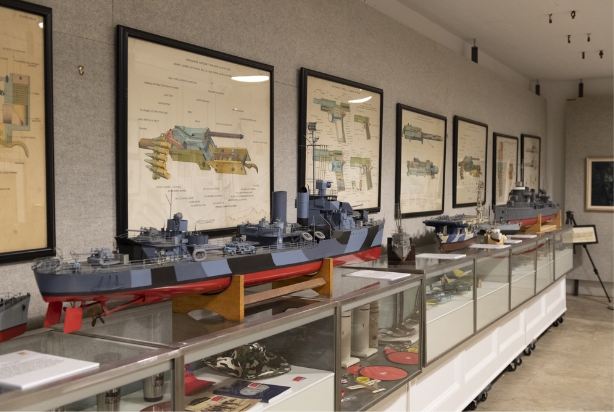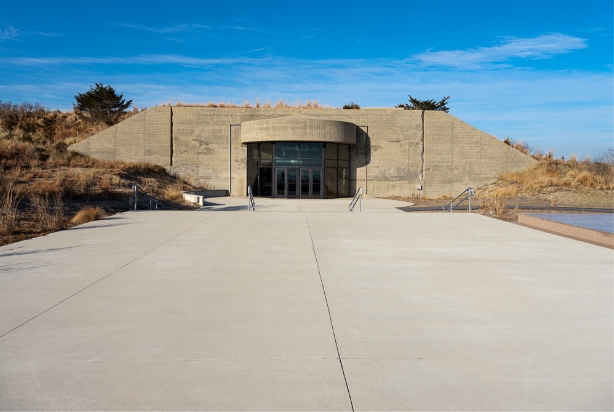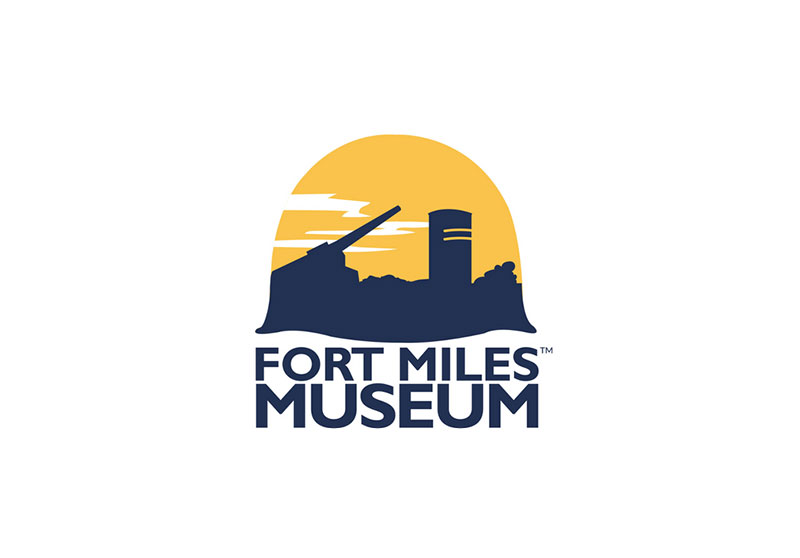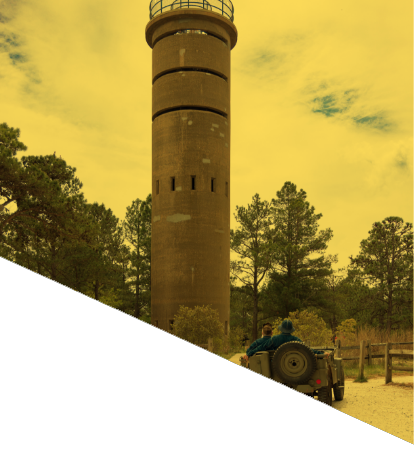
Since 2003, Fort Miles Historical Association and Delaware State Parks have worked as partners to renovate, operate and expand the Museum and surrounding historical area. Join FMHA and help protect history.
FMHA members work diligently to maintain Fort Miles Museum as a world-class cultural and educational destination for schoolchildren, history enthusiasts, veterans and visitors to coastal Delaware. The Museum, inside a World War II bunker, offers a unique experience – one that will continue to expand and flourish with your support.
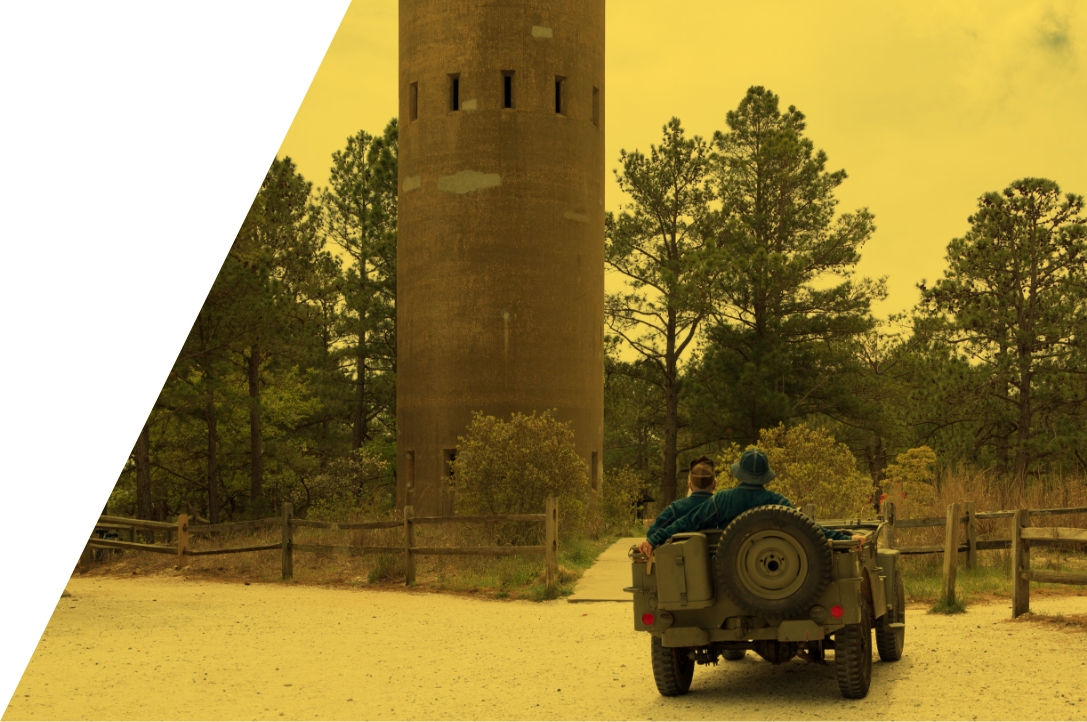
General: $1,000
New members or other members upgrading to the General level will be members in perpetuity with no further payment required.
All memberships are for one year, except General, and must be renewed each year. Renew your membership. Memberships are individual and the benefits apply to only one person.
Join Fort Miles Historical Association Today
Restoring History
In 2003, abandoned underground bunkers and other Fort Miles areas decaying from neglect, were unused except for habitation by snakes, spiders, insects, rodents and visits from two-legged intruders which were most intent on mischief. A group of dedicated men and women decided to make a difference. Here is their story.
The Founder’s Dream
The fort might have remained in its run-down state if not for the vision and dynamism of a local educator and lifelong lover of World War II history who saw beyond the graffiti, dirt and decay.
The late Dr. Gary D. Wray, noted historian and local prominent educator in the Cape Henlopen School District, knew how much work would go into transforming Battery 519 into a quality Museum.
“The place was a mess, full of critters, and just about every kid in the area had at one time or another partied inside,” he told a reporter in 2008.
Five years earlier, Wray; his close friend Lee Jennings, historian for Delaware’s Division of Parks and Recreation; Bob Frederick, former mayor of Dewey Beach, DE; and David Main, noted attorney, formed Fort Miles Historical Association in the shadow of the No. 3 fire control tower on Delaware’s coast. Jennings passed away in March 2010. Frederick is FMHA’s co-president. Main is a Washington lawyer who contributed to the association’s legal work.
Create a Museum
On that day in August 2003, Wray outlined to the small group his vision for Fort Miles: To create the best World War II Museum in an authentic WWII facility.
It is a testament to Wray’s indomitable belief in that mission and his undaunting persistence that his dream was realized in just two decades.
Fort Miles Museum, underground in Battery 519, features exhibits showing coastal defenses and the daily life of more than 2,000 soldiers and civilians stationed at Fort Miles during World War II.
FMHA, which now has more than 300 members, has worked with Delaware State Parks to operate and expand the Museum and surrounding historical area to make it the destination that Wray envisioned.
Early FMHA members faced an enormous chore. The 15,000-square-foot Battery 519, under 13 feet of concrete beneath the Great Dune, was dirty, damp, and dark, scarred by graffiti and awash with trash. It needed lights, heat, a dehumidifying system, working bathrooms, and secure entrances.
Bunker Busters
A pivotal group of volunteers was formed: the Bunker Busters. These jacks-of-alltrades, led by FMHA board member and retired physicist John V.H. Roberts, focused on restoring 519. The crew, including carpenters, metalworkers, electricians and historians, meets to work at least one day a week. The Bunker Busters crew performs yeoman work, building and restoring, painting and repairing, working so diligently that FMHA was named state volunteer association of the year in 2008 with 40,000 volunteer hours.
Once the initial challenges of making 519 “livable” were met, Wray set about fulfilling his quest to acquire one of every type of gun at the fort during the war — 3-inch, 6-inch, 12-inch and larger — to replace the original guns that were scrapped after WWII.
One of those replacements, a 12-inch gun in Battery 519’s South Gun Room, was taken off the USS Wyoming and found at the Navy’s Dahlgren, VA, facilities. The big gun, which could fire a shell 17 miles, was kitted out by the Bunker Busters with a periodauthentic gun cart and wooden shell replicas. The Busters also rigged it for sound: Visitors can press a button and hear a sonorous boom that simulates the gun’s firing.
The Big Gun
The crown jewel, however, is the 16-inch gun. Fort Miles had two during WWII, housed in Battery Smith. These giant guns were able to fire shells more than 20 miles.
In 2012, Wray learned that a stash of 16-inch gun barrels from the battleship USS Missouri was rusting at the Navy’s Dahlgren site.
The barrels were slated for the scrap heap and would be lost. Wray and FMHA launched a fundraising drive to rescue and transport one by barge and rail to Delaware. Fort Miles’ 16-inch barrel was on board the Missouri the day surrender documents were signed to end WWII in September 1945.
The next step for the big gun was corralling and moving the parts for its base. They were found in a weedy lot at Dahlgren and hauled to Cape Henlopen, where the Bunker Busters restored them to fighting trim.
In May 2016, using two immense cranes, 80 tons of counter weights, riggers and dozens of volunteers, the 16-inch gun was assembled at its permanent location in Fort Miles Artillery Park, overlooking the Atlantic Ocean.
Museum Centerpiece
“The barrel is the centerpiece of our Fort Miles Museum,” Wray said on the day of the installation. “What we’re all about here is the best World War II Museum in a World War II facility.”
The efforts of Wray and FMHA saved two other Missouri barrels: One was sent to Cape Charles, VA, and the second to a WWII museum in Arizona.
A Vision Realized
On Feb. 3, 2022, Dr. Gary D. Wray passed away at age 78.
He saw his vision realized, after nearly two decades of raising awareness and money, to deliver on the aspiration he outlined at the base of Tower 3 on that August day.
“His greatest feat was leading the restoration of Fort Miles, Cape Henlopen State Park’s World War II military installation, and turning it into a museum,” The News Journal reported after his passing.
Wray might have disagreed, arguing that while much has been done to realize his dream, more work remains.
The Founder’s Dream
The fort might have remained in its bedraggled state if not for the vision and dynamism of a local educator and lifelong lover of World War II history who saw beyond the graffiti, dirt and decay.
The late Dr. Gary D. Wray, a leader of the Cape Henlopen School District, knew how much work would go into transforming Battery 519 into a quality Museum.
“The place was a mess, full of critters, and just about every kid in the area had at one time or another partied inside,” he told a reporter in 2008.
Five years earlier, Wray; his close friend Lee Jennings, historian for Delaware’s Division of Parks and Recreation; Bob Frederick; and David Main formed Fort Miles Historical Association in the shadow of the No. 3 fire control tower on Delaware’s coast. Jennings passed away in March 2010. Frederick is FMHA’s co-president. Main is a Washington lawyer who contributed to the association’s legal work.
The Founder’s Dream
The fort might have remained in its bedraggled state if not for the vision and dynamism of a local educator and lifelong lover of World War II history who saw beyond the graffiti, dirt and decay.
The late Dr. Gary D. Wray, a leader of the Cape Henlopen School District, knew how much work would go into transforming Battery 519 into a quality Museum.
“The place was a mess, full of critters, and just about every kid in the area had at one time or another partied inside,” he told a reporter in 2008.
Five years earlier, Wray; his close friend Lee Jennings, historian for Delaware’s Division of Parks and Recreation; Bob Frederick; and David Main formed Fort Miles Historical Association in the shadow of the No. 3 fire control tower on Delaware’s coast. Jennings passed away in March 2010. Frederick is FMHA’s co-president. Main is a Washington lawyer who contributed to the association’s legal work.
The Founder’s Dream
The fort might have remained in its bedraggled state if not for the vision and dynamism of a local educator and lifelong lover of World War II history who saw beyond the graffiti, dirt and decay.
The late Dr. Gary D. Wray, a leader of the Cape Henlopen School District, knew how much work would go into transforming Battery 519 into a quality Museum.
“The place was a mess, full of critters, and just about every kid in the area had at one time or another partied inside,” he told a reporter in 2008.
Five years earlier, Wray; his close friend Lee Jennings, historian for Delaware’s Division of Parks and Recreation; Bob Frederick; and David Main formed Fort Miles Historical Association in the shadow of the No. 3 fire control tower on Delaware’s coast. Jennings passed away in March 2010. Frederick is FMHA’s co-president. Main is a Washington lawyer who contributed to the association’s legal work.
The Founder’s Dream
The fort might have remained in its bedraggled state if not for the vision and dynamism of a local educator and lifelong lover of World War II history who saw beyond the graffiti, dirt and decay.
The late Dr. Gary D. Wray, a leader of the Cape Henlopen School District, knew how much work would go into transforming Battery 519 into a quality Museum.
“The place was a mess, full of critters, and just about every kid in the area had at one time or another partied inside,” he told a reporter in 2008.
Five years earlier, Wray; his close friend Lee Jennings, historian for Delaware’s Division of Parks and Recreation; Bob Frederick; and David Main formed Fort Miles Historical Association in the shadow of the No. 3 fire control tower on Delaware’s coast. Jennings passed away in March 2010. Frederick is FMHA’s co-president. Main is a Washington lawyer who contributed to the association’s legal work.
Create a Museum
On that day in August 2003, Wray outlined to the small group his vision for Fort Miles: To create the best World War II Museum in an authentic WWII facility.
It is a testament to Wray’s indomitable belief in that mission and his undaunting persistence that his dream was realized in just two decades.
Fort Miles Museum, underground in Battery 519, features exhibits showing coastal defenses and the daily life of more than 2,000 soldiers and civilians stationed at Fort Miles during World War II.
FMHA, which now has more than 300 members, has worked with Delaware State Parks to operate and expand the Museum and surrounding historical area to make it the destination that Wray envisioned.
Early FMHA members faced an enormous chore. The 15,000-square-foot Battery 519, under 13 feet of concrete beneath the Great Dune, was dirty, damp, and dark, scarred by graffiti and awash with trash. It needed lights, heat, a dehumidifying system, working bathrooms, and secure entrances.
Bunker Busters
A pivotal group of volunteers was formed: the Bunker Busters. These jacks-of-alltrades, led by FMHA board member and retired physicist John V.H. Roberts, focused on restoring 519. The crew, including carpenters, metalworkers, electricians and historians, meets to work at least one day a week. The Bunker Busters crew performs yeoman work, building and restoring, painting and repairing, working so diligently that FMHA was named state volunteer association of the year in 2008 with 40,000 volunteer hours.
Once the initial challenges of making 519 “livable” were met, Wray set about fulfilling his quest to acquire one of every type of gun at the fort during the war — 3-inch, 6-inch, 12-inch and larger — to replace the original guns that were scrapped after WWII.
One of those replacements, a 12-inch gun in Battery 519’s South Gun Room, was taken off the USS Wyoming and found at the Navy’s Dahlgren, VA, facilities. The big gun, which could fire a shell 17 miles, was kitted out by the Bunker Busters with a periodauthentic gun cart and wooden shell replicas. The Busters also rigged it for sound: Visitors can press a button and hear a sonorous boom that simulates the gun’s firing.
The Big Gun
The crown jewel, however, is the 16-inch gun. Fort Miles had two during WWII, housed in Battery Smith. These giant guns were able to fire shells more than 20 miles.
In 2012, Wray learned that a stash of 16-inch gun barrels from the battleship USS Missouri was rusting at the Navy’s Dahlgren site.
The barrels were slated for the scrap heap and would be lost. Wray and FMHA launched a fundraising drive to rescue and transport one by barge and rail to Delaware. Fort Miles’ 16-inch barrel was on board the Missouri the day surrender documents were signed to end WWII in September 1945.
The next step for the big gun was corralling and moving the parts for its base. They were found in a weedy lot at Dahlgren and hauled to Cape Henlopen, where the Bunker Busters restored them to fighting trim.
In May 2016, using two immense cranes, 80 tons of counter weights, riggers and dozens of volunteers, the 16-inch gun was assembled at its permanent location in Fort Miles Artillery Park, overlooking the Atlantic Ocean.
Museum Centerpiece
“The barrel is the centerpiece of our Fort Miles Museum,” Wray said on the day of the installation. “What we’re all about here is the best World War II Museum in a World War II facility.”
The efforts of Wray and FMHA saved two other Missouri barrels: One was sent to Cape Charles, VA, and the second to a WWII museum in Arizona.
A Vision Realized
On Feb. 3, 2022, Dr. Gary D. Wray passed away at age 78.
He saw his vision realized, after nearly two decades of raising awareness and money, to deliver on the aspiration he outlined at the base of Tower 3 on that August day.
“His greatest feat was leading the restoration of Fort Miles, Cape Henlopen State Park’s World War II military installation, and turning it into a museum,” The News Journal reported after his passing.
Wray might have disagreed, arguing that while much has been done to realize his dream, more work remains.
Stay Current with the Bunker Blast and The Battery
The FMHA newsletter – “Bunker Blast” and formerly “The Battery” — is available for download in PDF format here. This is the complete back catalog of FMHA newsletters since the founding of the organization in 2003. The first membership newsletter was published in winter of 2004.


Everyone is a storyteller at Fort Miles Museum. From tour guides to event staff, each volunteer plays an important role honoring our veterans and recognizing the historic importance of Fort Miles and its location defending the East Coast during World War II.
History lovers, veterans, retirees, students and families are welcome to support the Museum, preserve history, and educate the next generations. We are looking for volunteers who can work on onetime and long-term projects, including:
Tour Guides / Docent
As a docent, you will be the public face of the Museum, welcoming visitors and leading tours, based on your availability, on Sundays from May to September. You’ll learn about and then share the history of Fort Miles and exhibits such as the USS Arizona relic. During the busy summer months, you may elect to work alongside Delaware State Parks historic interpreters on other days the Museum is open.
Researchers and Writers
You can supplement your interest in history and use your writing talent by contributing to our website and social media pages. Volunteers create or write articles and blog posts.
